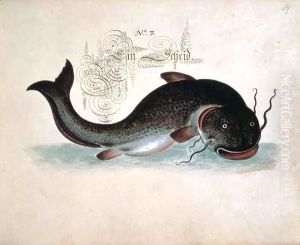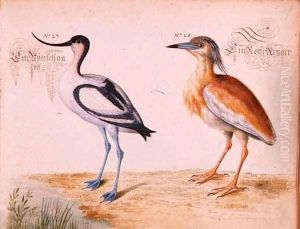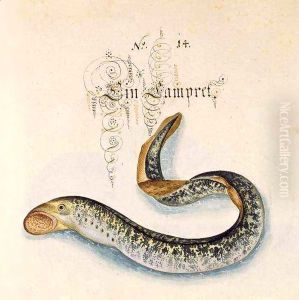Leonhard Baldner Paintings
Leonhard Baldner was a German artist and naturalist born in 1612 in Strasbourg, which at the time was part of the Holy Roman Empire and is now located in France. Baldner is primarily known for his work as an illustrator and his contributions to the field of natural history through his detailed observations and depictions of plants and animals.
Baldner's background was not that of a formal scientist, but rather he was a fisherman by trade, which gave him a unique perspective and access to a variety of species. His fascination with the natural world around him led him to create a manuscript known as 'Vögel, Fisch und Thierbuch' (Book of Birds, Fish, and Animals), which was completed around 1666. This manuscript is a collection of watercolors and detailed descriptions of the flora and fauna found in and around the Rhine River.
Although Baldner did not receive significant recognition during his lifetime and he remained relatively unknown in the art world, his work has gained more attention in recent years. Scholars value his contributions for their combination of artistic skill and empirical observation, which provided a basis for later scientific studies. His illustrations include a wide variety of subjects, from common European animals to more exotic creatures that were brought to Strasbourg by merchants and travelers of the era.
Leonhard Baldner's dedication to capturing the natural world did not initiate a broader movement or school of art, but his work is appreciated for its historical and scientific significance. His manuscript offers a glimpse into the biodiversity of the 17th century Rhine region and reflects the early stages of natural history documentation and the growing interest in empirical study during this period. Baldner died in 1694, leaving behind a legacy encapsulated in his detailed and carefully crafted illustrations that continue to be of interest to both art historians and natural scientists.


